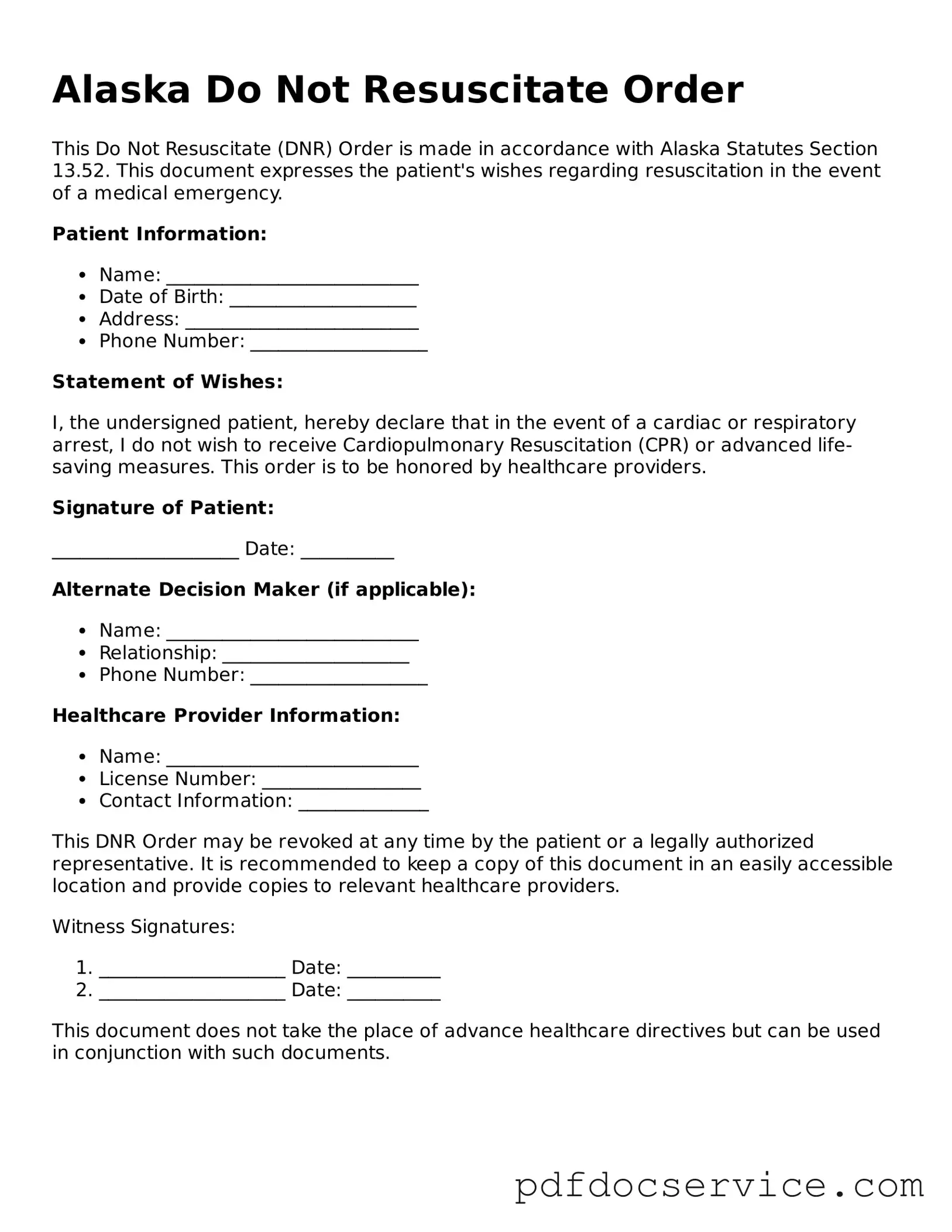Printable Do Not Resuscitate Order Template for Alaska
The Alaska Do Not Resuscitate (DNR) Order form is a legal document that allows individuals to express their wishes regarding resuscitation efforts in the event of a medical emergency. This form is particularly important for those with serious health conditions who wish to avoid aggressive life-saving measures. Understanding the implications of a DNR order can help ensure that patients receive care that aligns with their personal values and preferences.
Open Do Not Resuscitate Order Editor
